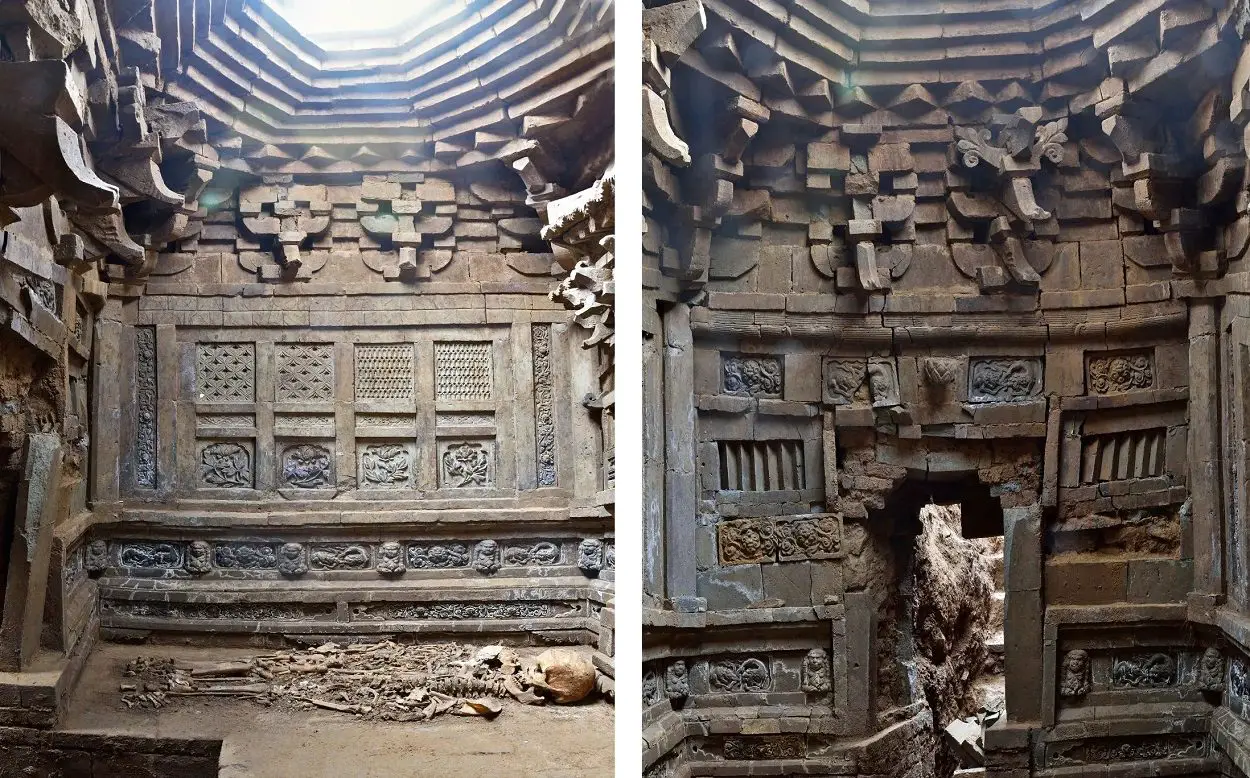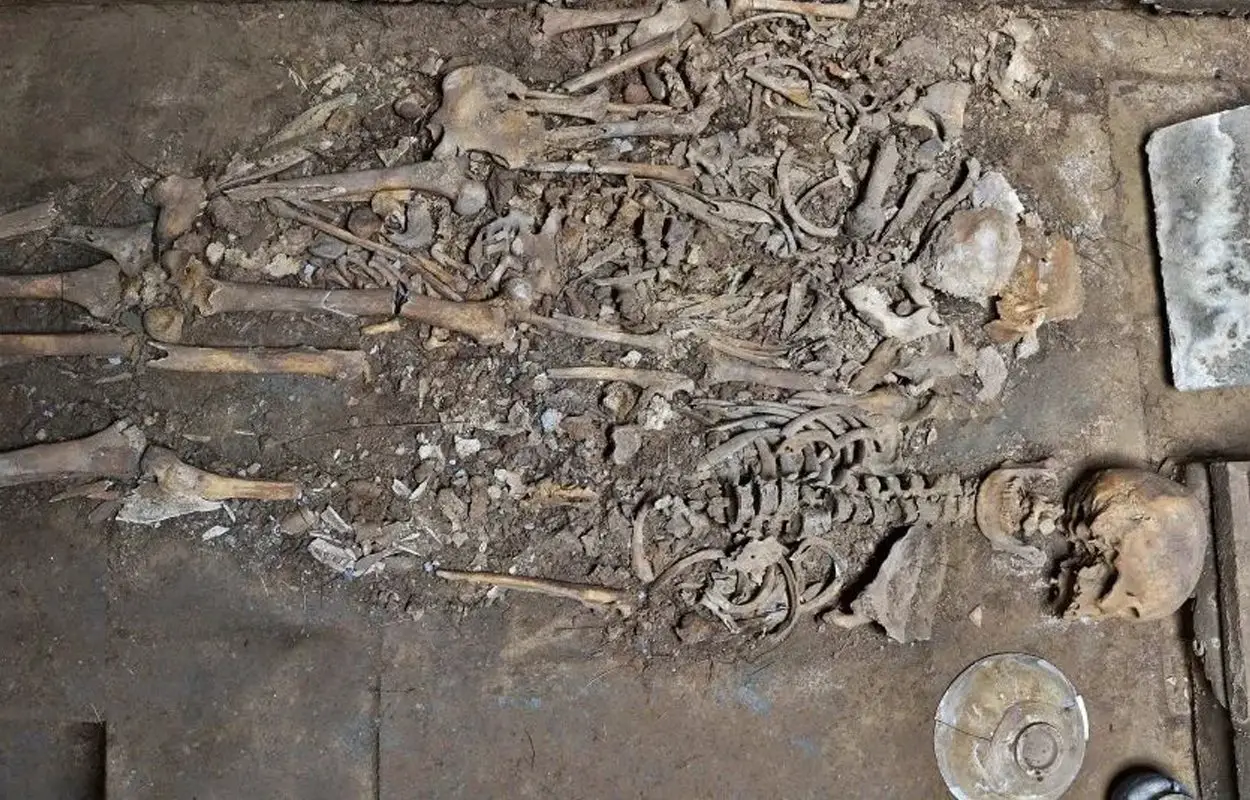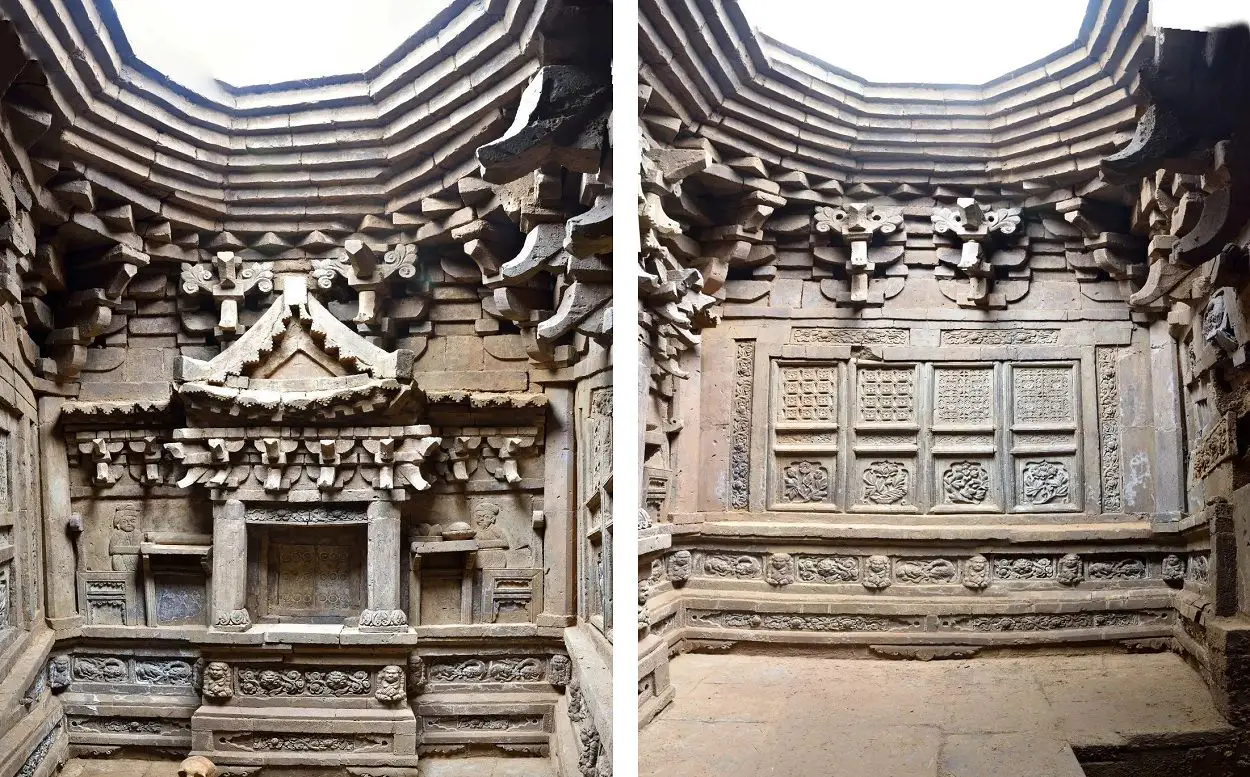Archaeologists have uncovered an ornate brick-chambered tomb from the Jin Dynasty in the Shanxi province of China.
Excavations were conducted by the Shanxi Provincial Institute of Archaeology near the village of Dongfengshan in Yuanqu County as a result of construction works for a new pipeline.
The tomb dates from the Jin Dynasty, a period officially known as the Great Jin that existed from AD 1115 until AD 1234. The Jin dynasty was created in modern Jilin and Heilongjiang by the Jurchen tribal chieftain, Aguda. The dynasty continued to rule until the last emperor, Aizong, committed suicide by hanging himself to avoid being captured by the Mongols.
Archaeologists uncovered a square-shaped brick-chambered tomb constructed with carved bricks that imitates wood. The tomb consists of the main burial chamber which is accessed by a stepped passageway leading through a corridor from a sealed doorway.

The length of the burial chamber measures roughly 2 metres on each side and reaches a height of 3.4 metres to form an octagonal roof with 13 stacked inclining layers of bricks.
The north wall of the chamber shows a gatehouse flanked on either side with a depiction of a man and woman sitting behind tables on ornately carved chairs. The man is shown with a goatee and is wearing a gown with a belt around his waist, while the woman is wearing a double-breasted gown with her hands folded in the sleeves.
On the west and east walls are lattice panels or doors which are carved with flowers on the lower partition. The upper parts of the panels show varying patterns of concave, octagonal, or uniform square shapes.

Three burials were placed in the chamber consisting of a young child and two adults who died at the age of between 50 and 60 years old. Placed alongside the burials were porcelain bowls, jars, a lamp, and glazed pots.
Also uncovered is a land purchase certificate made from brick with an inscription in calligraphy that roughly translates as “Wang Village” with the names of “Gongcao and Mingchang.” An examination of the certificate dates it to around AD 1190 to AD 1196 during the reign of Emperor Zhangzong of Jin.
Speaking on the discovery, the Shanxi Provincial Institute of Archaeology said: “The excavation of this tomb has enriched our understanding of the Jin Dynasty in the southern Shanxi area. The land purchase certificate has a clear date which provides an accurate basis for the dating of other tombs in the same period.”
Shanxi Provincial Institute of Archaeology
Header Image Credit : Shanxi Provincial Institute of Archaeology





